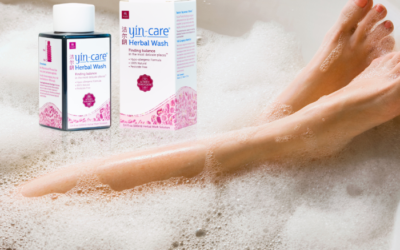Activated Charcoal and Your Health
What Is It
Activated charcoal is the byproduct of slowly burnt wood, coconut shells or peat that is treated with oxygen – rendering it highly porous and nonpolar – giving it properties that allow it to adsorb or bind to hydrophobic toxins and odors from gases or liquids approximately up to a thousand times its weight.
Lately, activated charcoal can be found in everything from toothpaste to foods to beauty products. While it may be a fun fad to try in foods like cocktails, ice cream or pizza, it isn’t at its most beneficial to use this way for wellness.
The Composition of Activated Charcoal
Before you grab a piece of charcoal from the bag resting by your grill and rub it all over your teeth, it is important to understand that we are talking about “activated” charcoal.
In this context, heating up gas transforms charcoal into a fine, black powder, making it more porous, which results in what is known as activated charcoal. “Regular” charcoal is made from peat, coal, wood and other ingredients.
Activated charcoal, then, is technically activated carbon; the terms are interchangeable. Activated charcoal has been used in other contexts, such as treating cases of poisoning, as it acts to trap and/or absorb toxins.
Activated charcoal has natural adhesive qualities; as it is porous, it works by binding with and helping to scrub away surface stains. Deeply stained teeth, however, are best treated by a professional.
Where to Find It
You can purchase activated charcoal, specifically for teeth, at several chain drug stores or you can buy it online. Be forewarned that it is more expensive than a tube of toothpaste—perhaps even more than double the price—but it can last for quite a while.
True activated charcoal comes in powder form, which can even be mixed with your regular toothpaste. Activated charcoal can also come in a pre-mixed paste, like toothpaste, which is less expensive, though, again, pricier than traditional toothpaste.
Should you choose to use activated charcoal to reduce stains from your teeth, try to find a brand that also contains fluoride. If you cannot, then make activated charcoal an occasional use, or at least, supplement with a fluoride-based toothpaste.
How to Use It For Oral Health
Using activated charcoal on your teeth is not the same as using toothpaste. For one thing, it (temporarily) turns your teeth black, which may seem counterintuitive when your goal is to whiten your teeth.
Some activated charcoal is already pre-made into a fine black powder. You might also be able to find this in tablet form at health food stores; you would just need to grind up one or two tablets until it becomes dust, to which you would add water to form a paste.
Do not scrub your teeth with activated charcoal like you’re scrubbing stubborn stains out of a sink, or you could risk wearing away the enamel, warns the ADA. A preferred method is to brush with less force or to just gently rub the paste over your teeth and leave it on for three minutes; it will look like you just ate a dozen Oreos. Then, rinse your teeth with water and brush with ”regular” toothpaste. Be careful that you do not have any mouth sores when you first try it, and if you experience bleeding gums, discontinue use. And if you’re prone to tooth sensitivity, activated charcoal could wake this up, so caution is always recommended.
If you are going to sink your teeth into activated charcoal, don’t make it an everyday habit. Perhaps start off with once a week or every other week to monitor the results. At the very least, if you purchase a product rather than make the activated charcoal yourself from tablets, follow the manufacturer’s directions.
Remember that using activated charcoal to brush your teeth should never replace your daily teeth-brushing regimen.
Safety/Effectiveness
The FDA has not evaluated the use of activated charcoal for tooth whitening; rather, it is an “off-label” use. And the American Dental Association has said that more research needs to be done to establish its effectiveness specifically for tooth whitening as well as how it could interact with medicines if inadvertently swallowed. There are other whitening products on the market that have, indeed, been evaluated for safety and approved by the FDA.
It may be more effective for reducing surface stains than for whitening, but more research needs to be garnered.
There are a lot of opinions out there about whether or not you should use activated charcoal for dental care but little solid research that points one way or another to its efficacy.
Like any product that has garnered social media attention as the newest fad, do your own research before diving in. And, if you are changing up or modifying your oral health care regimen, it is always advisable to check with your dentist beforehand, particularly before you spend money on these types of dental products.
How to add activated charcoal to your diet
Activated charcoal powder has traditionally been used for medicinal purposes since approximately 1550 BC. It has been used more recently as a detoxifier and poison antidote. As an antidote, activated charcoal adsorbs most organic toxins, chemicals, and poisons before they can cause harm to the body. Today, activated charcoal can be found in purifying masks, hangover-free cocktails, toothpaste, and even on pizza!
Other uses for activated charcoal
Here are a few ways to use activated charcoal:
- Masks – the absorptive properties help to pick up dirt, oil, and other impurities from the skin.
- Shampoo – activated charcoal can help with scalps that are itchy, oily or flaky.
- Deodorant – it won’t irritate your skin and makes it a natural and aluminum-free option, as well as absorbing sweat and odor.
- Water purifiers – carbon filters for your faucet or pitcher is one of the most ubiquitous forms of activated charcoal you can use and it removes most odors, contaminants (including pesticides and chlorine) and reduces heavy metals like lead.
- Air purifiers – can help to clear out toxins and odors from the air, neutralizing stinky areas around your home, such as the fridge, bathroom, and garbage.
Try an Activated Charcoal Supplement – one of the world’s oldest detoxifying method is activated charcoal. To eliminate toxins, soak up poisons and relieve gas and bloating, rid bad breath, and benefit from anti-aging properties try taking an activated charcoal supplement. However, make sure to take between meals and a few hours after using other vitamins or mineral supplements, as well as prescriptions, as the charcoal may interfere with absorption into the body.
References
123 Dentist, “Whitening your teeth with activated charcoal”. 123dentist.com 23 Sept 2016. Web.
Trust Dental. “Does Activated Charcoal Teeth Whitening Works? You Need to Know This” trustdental.com Web.
Hubbard, Lauren and Tunell, A. “Is Charcoal Toothpaste Safe to Use?” Harpar’s Bazaar. 14 Aug 2018. Web.

Hilary Daninhirsch is a Pittsburgh-based freelance writer. A former lawyer, she lives with her husband, two redheaded teenage daughters, and a needy terrier. When she’s not writing, she’s probably reading or cheering on one of her daughters at a gymnastics meet or on a stage. Hilary’s online portfolio can be viewed at hilarydaninhirsch.journoportfolio.com



